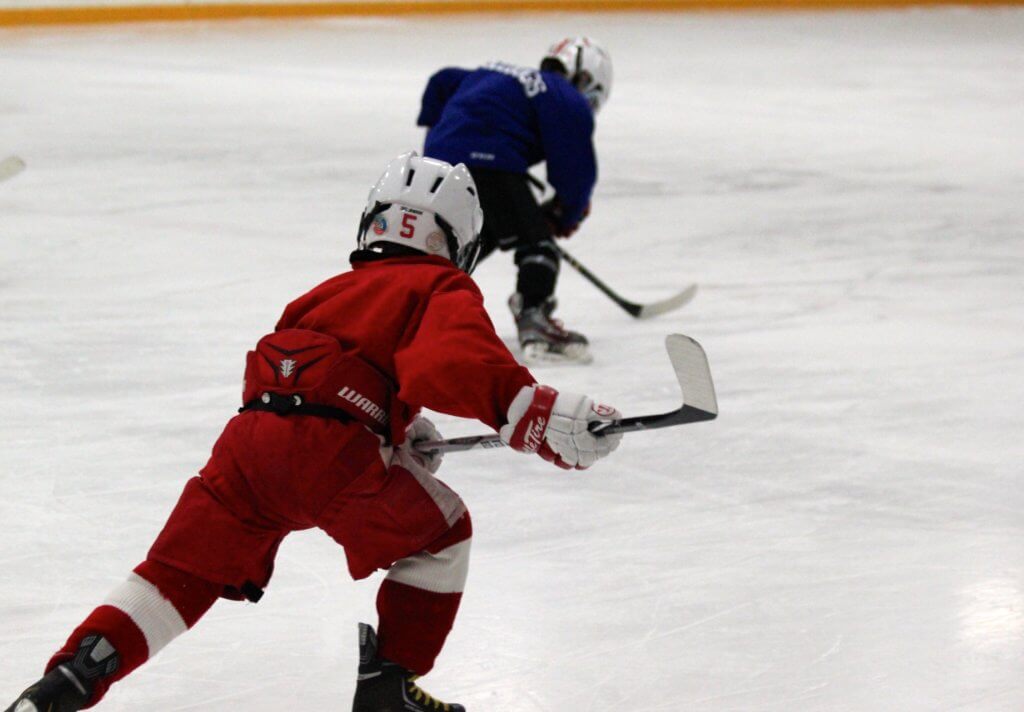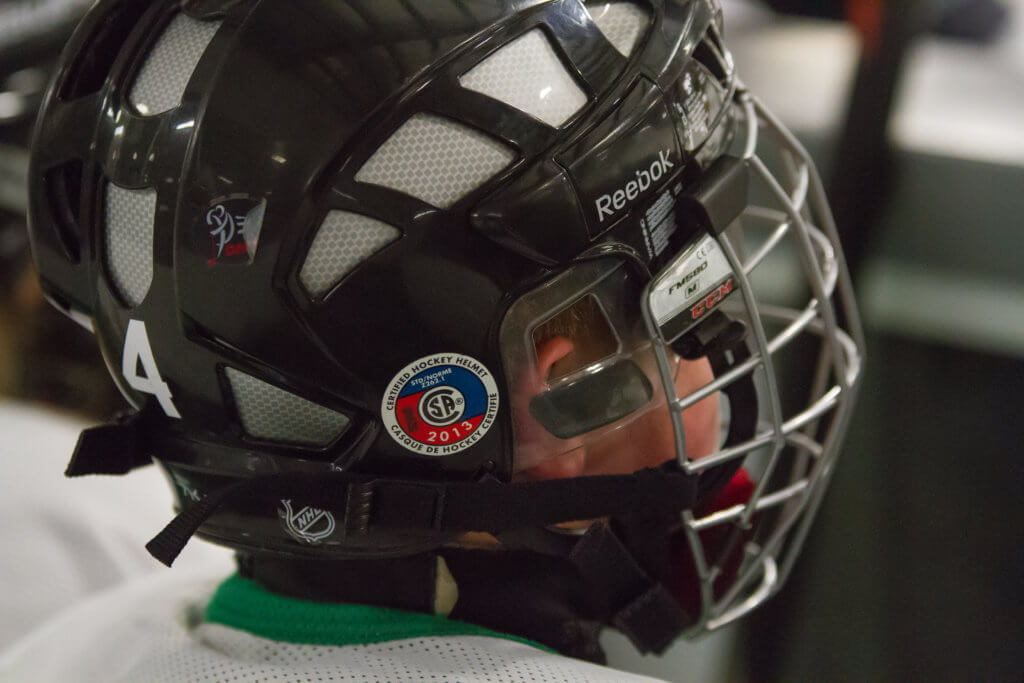Hockey may not initially inspire thoughts of the world’s safest sport. With a reputation for brawls on the ice and toothless grins, parents may be understandably cautious about signing up their kids for the community hockey league.
However, with the proper precautions (and protective gear), the game can be played safely while those on the ice reduce their chance of injury.

Hockey is a unique sport, says Mark Salandra, a certified strength and conditioning specialist and the founder of StrengthCondition.com (a Physiquality partner program). “It incorporates speed, agility and strength in ways that no other sport tests the body,” he explains. As with any sport, injuries can be caused by a variety of factors, including the level of participation, player position, protective equipment, violent behavior, and personal susceptibility due to pre-existing injuries and style of play.
The most dangerous injury that hockey players are susceptible to is the one most difficult to avoid, notes Mark. Given the fast pace on the ice, collisions with other players, as well as the rink walls, are inevitable, and such hits can lead to concussions. As with football, hockey leagues have been studying the injury seriously, advocating a variety of measures designed to reduce concussions, particularly among younger players.
USA Hockey, the organization that oversees amateur hockey associations in the U.S., advises all players young and old to protect the head by wearing a helmet when playing. They have posted tips and created training, for both parents and coaches, on how to keep players safe. Most importantly, they explain how to look for signs of a concussion: Looking dazed or confused, being unable to remember post-injury events, having problems with concentration or balance, or even simply irritability. Should a parent, coach or athlete notice these symptoms, particularly if the athlete is showing more than one symptom, it’s time to talk to a doctor.

Most hockey injuries involve the soft tissues, like bruises, muscle strains, ligament tears, and cuts, Mark notes, but serious injuries are possible, and players should avoid dangerous tactics. To prevent injuries, hockey players should:
- Be screened before the season begins by an experienced physical therapist or physician. This should identify existing injuries and uncover deficiencies.
- Participate in a sports-specific conditioning program to avoid physical overload.
- Wear high-quality equipment that fits well and is not damaged, worn-out, or undersized.
- Play by the rules. Players and coaches should always demonstrate sportsmanship and mutual respect for their opponents and the officials.
Mark suggests that hockey players focus on four areas in order to improve their abilities and reduce injuries: the core, leg strength, upper body strength, and flexibility.

Core strength is very important because hockey players are constantly twisting and turning, and getting up off the ice onto their skates. Key core strengthening exercises that hockey players can do are crunches, planks and Superman exercises. Mark advises tightening your transversus abdominis during these exercises (that’s the deepest abdominal muscle, the one you feel contracting when you cough).
While it shouldn’t be surprising that leg strength is key to a sport that involves skating on a slippery surface, Mark points out that ice hockey is different in that athletes have to go from start to stop, and stop to start, very quickly with explosive power. By incorporating such exercises as lunges, squats, leg extensions and curls, and calf raises, players will increase leg strength and reduce their risk of leg injuries.
Between swinging a hockey stick and colliding with other players (and walls), upper body strength is essential to reducing injuries. A comprehensive strengthening program should include such upper body exercises as bench and shoulder presses, biceps and wrist curls, triceps extensions, and rotator cuff exercises like doorway stretches and lawn mower pulls.

Given the various directions that hockey players move in during a match, flexibility can help improve a player’s mobility. Mark recommends doing a warm-up, as well as stretching, before any activity, and reminds athletes to stretch only to the point of resistance, not pain. All stretching should be done slowly and carefully, particularly if you’re on the ice. And stretching after activity can help your body recuperate faster.
Speaking of recuperation, don’t forget the most important part of your activity — rest. The more rested you are, the better you’ll perform on game day. “It is only after your workout, when you are resting and replenishing your body with protein and other nutrients, when the body heals and gets stronger. This is why I live by the motto, ‘Train hard, but rest harder,'” says Mark.
Your local Physiquality physical therapist is an excellent resource for athletic training, injury prevention and advice and treatment if you do sustain an injury. Use our therapist finder below to locate the professional nearest you.
Thank you to our contributors:

Mark Salandra, CSCS, is the founder of StrengthCondition.com, one of Physiquality’s partner programs. Mark educates and trains athletes young and old in strength and conditioning, with the goals of better fitness and lower rates of injury.
Gillespie, Kerry. Study on former NHL players and concussions yields surprising early results. Toronto Star, April 23, 2017.
Barta, Kristen. Five exercises for rotator cuff pain. Healthline.com, May 13, 2016.
Why rest is an important part of your exercise regime. Physiquality, February 15, 2013.
Ice hockey exercises. Stretching-exercises-guide.com.
USA Hockey.
Duvall, Jeremey. Trainer Q&A: Do I need to stretch after workouts? Men’s Fitness.
Bodybuilding.com.
Emery CA, Hagel B, Decloe M, Carly M. Risk factors for injury and severe injury in youth ice hockey: a systematic review of the literature. Injury Prevention, April 2010.
American Journal of Sports Medicine.
- Stuart MJ, Smith AM, Malo-Ortiguera SA, Fischer TL, Larson DR. A comparison of facial protection and the incidence of head, neck, and facial injuries in Junior A hockey players. A function of individual playing time. January-February 2002.
- Smith AM, Stuart MJ, Wiese-Bjornstal DM, Gunnon C. Predictors of injury in ice hockey players. A multivariate, multidisciplinary approach. July-August 1997.
“Hockey Helmet” by YYZ Kid is licensed under CC BY-SA 2.0.
“Motor City Bulldogs – Youth Hockey” by healthiermi is licensed under CC BY-SA 2.0.